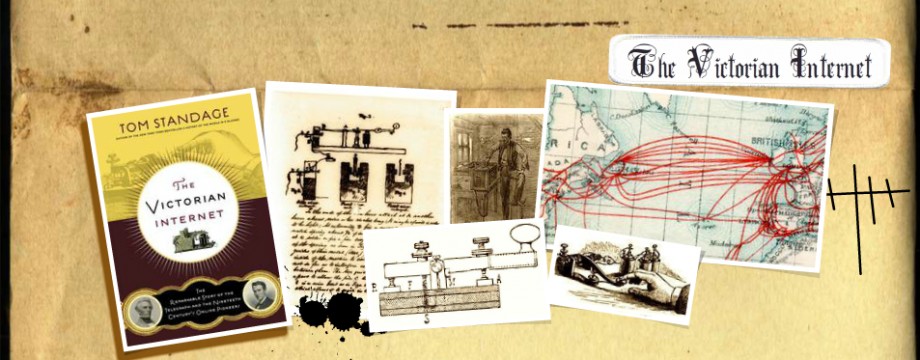Chapter 7: Codes, Hackers, and Cheats
By: Jordan Souc, Zhitao Wang, Bita Bakhshoudeh
The telegraph allowed for the speedy transmission of information across great distances, and this meant that people in control of information were at a great advantage because now they can transport information almost instantly. The telegraph’s ability to send information instantaneously became a problem for the government as it provided opportunities for fraud and theft. Criminals quickly found ways to take advantage of this new technology. In 1834, François & Joseph Blanc bribe telegraphers to gain information about the stock market in Paris, France. In 1840s, a man in Shoreditch station in London received a secret coded message about the results of a horse race. In a horse race the results are known as soon as race ends, but before the inventions of the telegraph, the results would take as long as a train or horse would take to transport the information to the next location. If people adquired the results of the horse race before the bookmakers, they could place confident bets. Since sending the results was illegal, people started inventing creative codes to communicate. As a result, schemes like the horse race became common. However, using codes was not only a criminal thing, as governments, companies, and organizations used codes as well. Compared to letters, the telegraph was regarded insecure because no one knew who might have seen the messages. As a result, the demand for codes and ciphers grew significantly. Meanwhile, the rules deciding when to use codes were becoming extremely confusing. In 1864, a conference was held by top European nations to address security in the telegraphic network. In 1865 the International Telegraph Union was created, that set the rules for coded message transmission. In most of Europe, the use of code was prohibited except by government. After much confusion, the French government took the initiative of organizing a meeting with the top European countries to discuss and agree on a set of codes. They agreed to legalize the sending of coded telegrams. In the USA, telegraphy was private; therefore, there was no restriction using codes. In 1845 two books were published for business communication. Between 1845 and 1894, there was a battle between the customers and the telegraph business to find middle grounds on the proper use of codes. The main issues were security and cost. Telegraphic messages were expensive. Therefore people found their own means of security through coding which often shortchanged the telegraph companies. Codes based on numbered words were invented. Later on Latin words were used to replace phrases. These codes were too easy for everybody to understand, thus they were not secure enough. Ciphers were used by those who cared about messages’ secrecy; however, it was not easy for operators to work with them. Besides, they were not profitable as they reduced the number of words to be sent. ITU (International Telegraph Union) set up rules for the codes to be not more than 7 syllables and be pronounceable. Ciphers; however, were charged for every five characters as one word. They were more expensive. Later on ABC codes appeared. This coding was invented by William Clausen-Thue. It was economical and reduced the telegraph price. ABC was the first “commercial code”. In fact different companies used different codes based on their needs. In 1875 ITU tried to control the “commercial codes”, as they started to involve very long letters. In 1885 the codes were limited to 10 letters and had to be in German, English, Spanish, French, Italian, Dutch, Portuguese or Latin. The problem was that the slightest misspelling ended up in a totally different meaning. A wool dealer in Philadelphia was damaged by a misspelled message which cost him 20,000 $. He filed a complaint against Western Union but could win only the price he paid for sending the message as he did not ask for the confirmation receipt from the telegraph office. In 1894 the first dictionary of vocabulary consisting 256,740 word chosen among the eight languages was published. But it was not welcome. This issue was solved in 1894 with the ITU’s creation of the official telegraphic vocabulary for transmitting messages, which set a formal standard for the contents of messages being sent. Doubts about the security of electronic commerce have held back the development of telegraphic banking transactions. Banks relied on the complex codes to transmit information across the network, and now people in need of money quickly could obtain it with no issue. In 1872, Western Union, the leading telegraph company, implemented a new system that was based on the division on the company’s networks into 20 districts, each with a superintendent who managed the transmission on messages. This increased security and allowed larger transactions across longer distances.
In 1984, Captain Dreyfus was accused of creating an incriminating document. News spread so fast about Dreyfus’ arrest that an Anti-Dreyfus movement was started. Due to Dreyfus’ Jewish heritage, the Anti-Dreyfus movement was tied to anti-Semitism and the anti-Jewish sentiment divided the nation. Italy’s Colonel Alessandro Panizzardi sent a message via telegram to his chief in Rome stating that Dreyfus was not a spy, and the higher powers should reveal this information. This message was mistranslated by the French Ministry of Posts, and required another message from Panizzardi to decode the real meaning, which then revealed that Dreyfus was in fact innocent.
